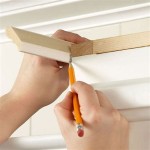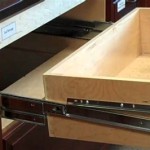Unveiling the Secrets of Small Moths in Kitchen Cupboards
Small moths, often referred to as pantry moths or Indian meal moths, are unwelcome guests that can infest kitchen cupboards, compromising your stored food. Understanding their habits and implementing effective control measures is crucial to prevent infestations and safeguard your pantry.
Identifying Small Moths
Small moths typically measure between 1/4 and 1/2 inch in length, boasting a grayish-brown or tan coloration. Their wings display distinct lines or dots, and they have long, slender antennae. These moths are often mistaken for clothes moths, but they are distinct species with varying habitats.
Causes of Infestations
Small moths are attracted to stored food products, particularly grains, cereals, flour, and pet food. These products provide an ideal breeding ground for the moths to lay their eggs and develop. Unsealed food containers, torn packaging, or spilled food can facilitate their entry into your pantry.
Lifecycle of Small Moths
The lifecycle of small moths consists of four stages: egg, larva (caterpillar), pupa, and adult. Eggs are laid on or near food sources, and the hatched larvae feed on these products, creating visible webs and excrement. The larvae then transform into pupae and eventually emerge as adult moths, perpetuating the infestation cycle.
Preventing Infestations
Practicing proper kitchen hygiene is the key to preventing small moth infestations. Regularly inspect your pantry for signs of moths or larvae. Store food in tightly sealed containers or airtight bags to prevent their access to food sources. Vacuum and clean your pantry, removing any spilled food or crumbs.
Consider using moth traps or pheromone dispensers to monitor and control moth populations. These traps attract and capture moths, preventing them from laying eggs or reproducing.
Eliminating Infestations
If you suspect a small moth infestation, take immediate action to eradicate it. Discard any contaminated food and thoroughly clean your pantry with a mixture of vinegar and water. Wipe down shelves, drawers, and containers to remove any remaining eggs or larvae.
Vacuum your pantry regularly and pay attention to corners or crevices where moths may hide. You may also consider using insecticides specifically designed to target moths. However, always read the instructions carefully and follow the recommended safety precautions.
Conclusion
Small moths can be a nuisance in kitchen cupboards, but by understanding their habits and implementing preventative measures, you can effectively manage and eliminate infestations. Regular pantry inspections, proper food storage, and effective cleaning practices are essential for maintaining a moth-free kitchen environment.

Everything To Know About Getting Rid Of Moths In Cupboard Spaces

How To Get Rid Of Pantry Moths Homeowner S Guide Bob Vila

Why Has My Home Been Overrun By Pantry Moths And How Do I Get Rid Of Them An Expert Explains

How To Get Rid Of Pantry Moths Pestxpert

Pantry Moths

Pantry Moths You Can Get Rid Of Them Here S How I Did

Pantry Moths Vs Clothes The Differences That Matter

How To Get Rid Of Small Pantry Moths Flying Around The House

Pantry Moths How To Get Rid Of Pestworks

Everything To Know About Getting Rid Of Moths In Cupboard Spaces
Related Posts








